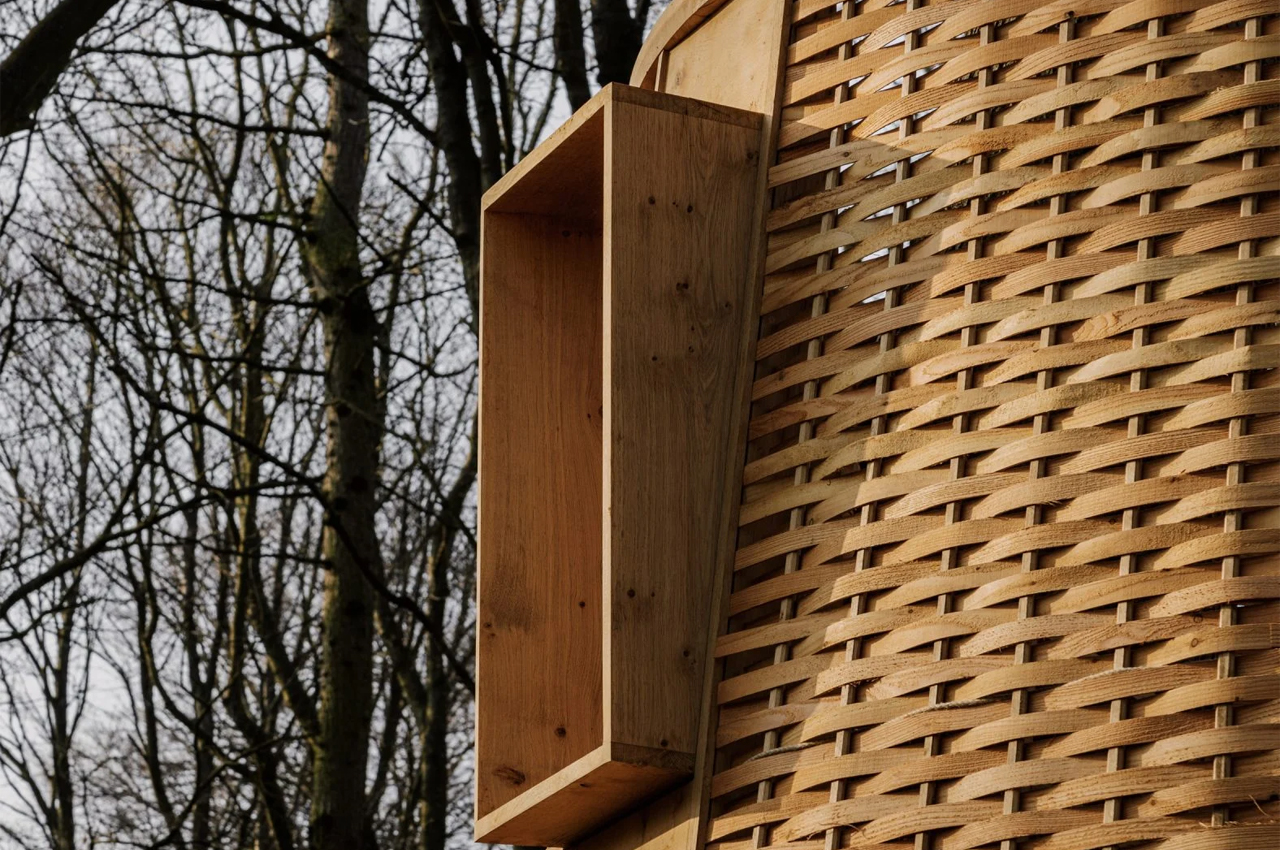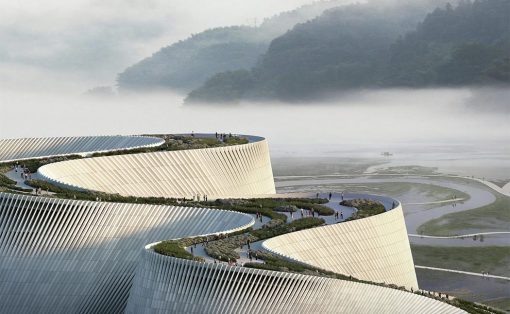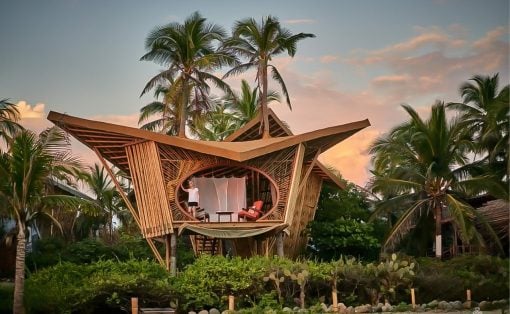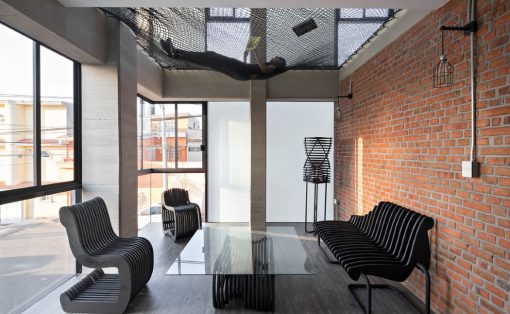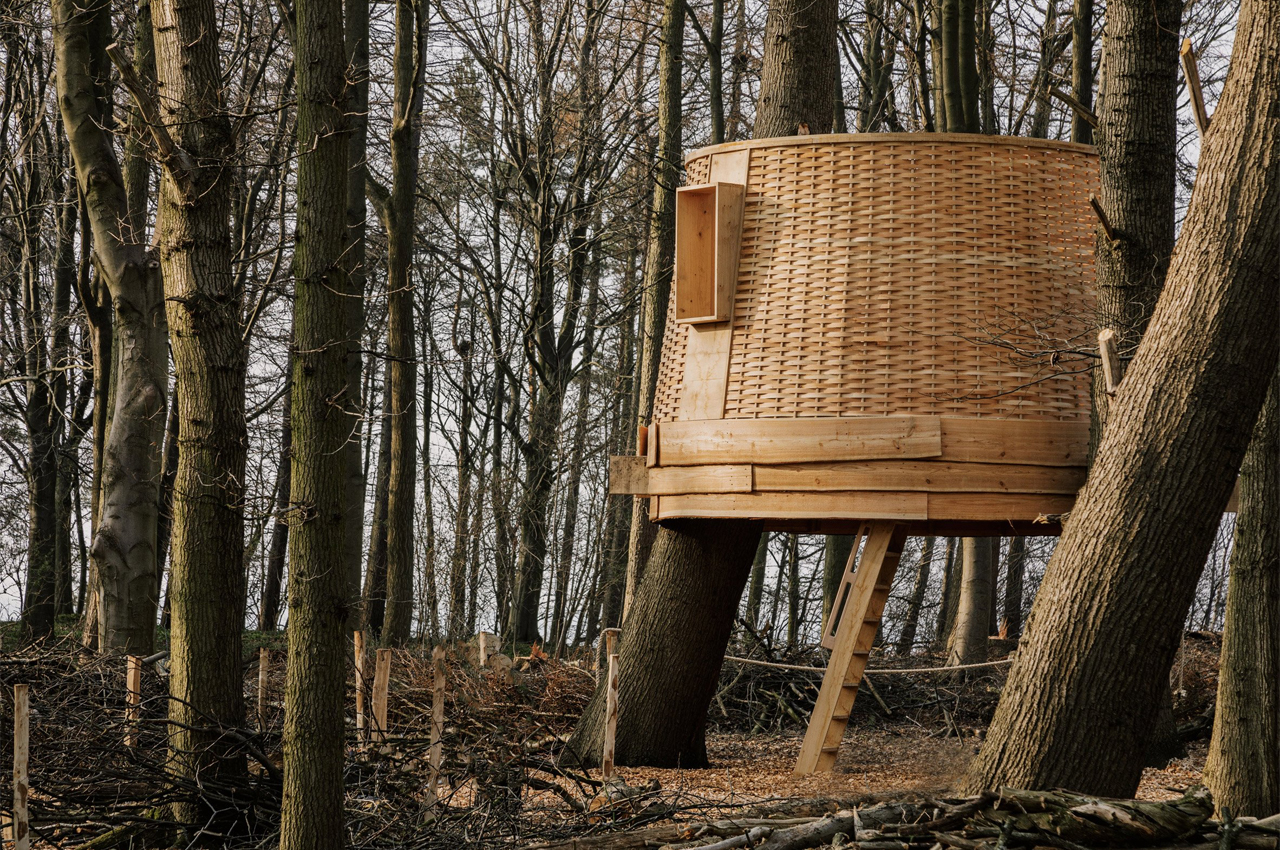
The Sylvascope is a wooden treehouse built for The Harewood Biennial 2022 exhibit where designers and artists explore why craft is a radical act.
The Harewood Biennial 2022 is a contemporary art exhibit that takes place on the estate of the Harewood House located in Leeds, United Kingdom. The exhibit is meant to explore forms of radical acts within the scope of design and craft. Spread over 100 acres of land, artists and designers embrace radical acts through their own interpretations, from organic architecture to mycelium-based furniture. For Sebastian Cox, a London-based fine furniture maker, his idea of radical acts took shape in the form of a treehouse. Dubbed Sylvascope, the treehouse is a nest-like space constructed by cutting trees down, Cox’s chosen radical act.
Designer: Harewood x Sebastian Cox
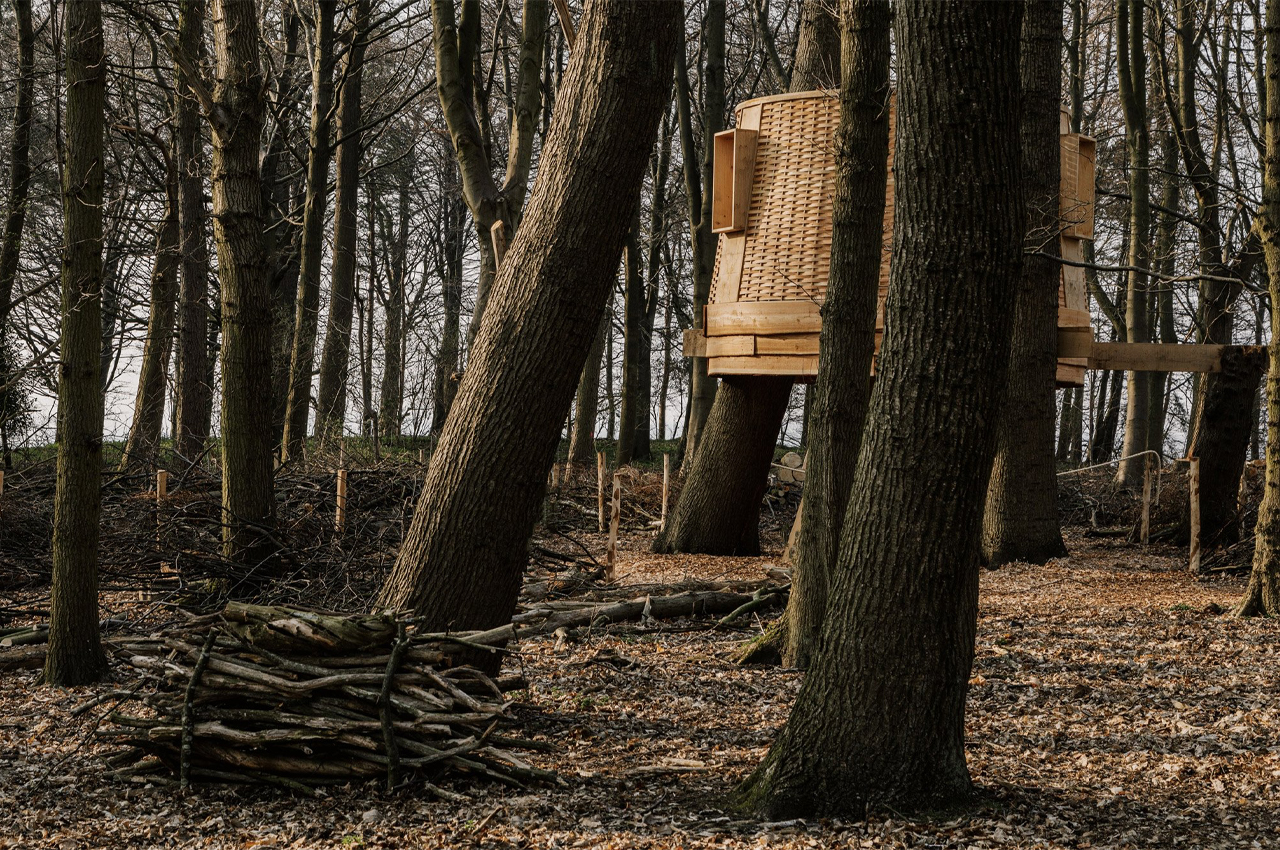
Describing the inspiration behind this radical act, Cox describes, “We are planting trees at a rate not seen before in history. The area of woodland in Britain is now back at the level it was in the 14th Century. Despite this, biodiversity within woodlands is declining. How do we save our woodland wildlife? It seems not necessarily by planting more trees–we need to manage our woodland.” In an effort to explore how cutting down trees can help diversify the woodland creatures that populate the forest, the trees used to give rise to Sylvascope came from felled trees located on-site.
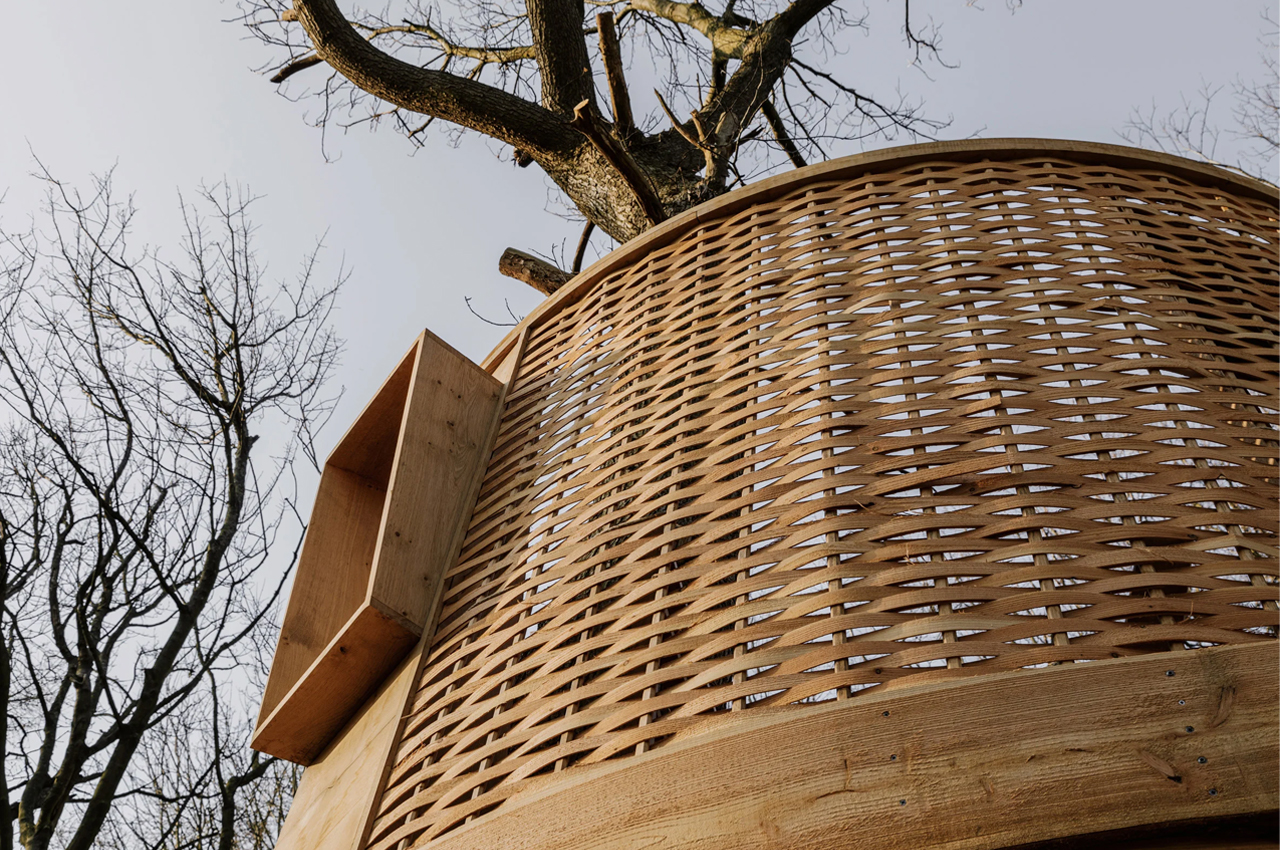
Built almost entirely from trees harvested onsite, the Sylvascope treehouse is located in the nucleus of the Harewood Estate to show what managed forests look like. Through this radical act, Cox hopes to help facilitate the growth of brambles and herb undergrowth to boost the area’s biodiversity. Along with cutting trees down, Cox is also planting new seeds and trees in different sections of the forest to provide diverse nesting grounds for different animal species.
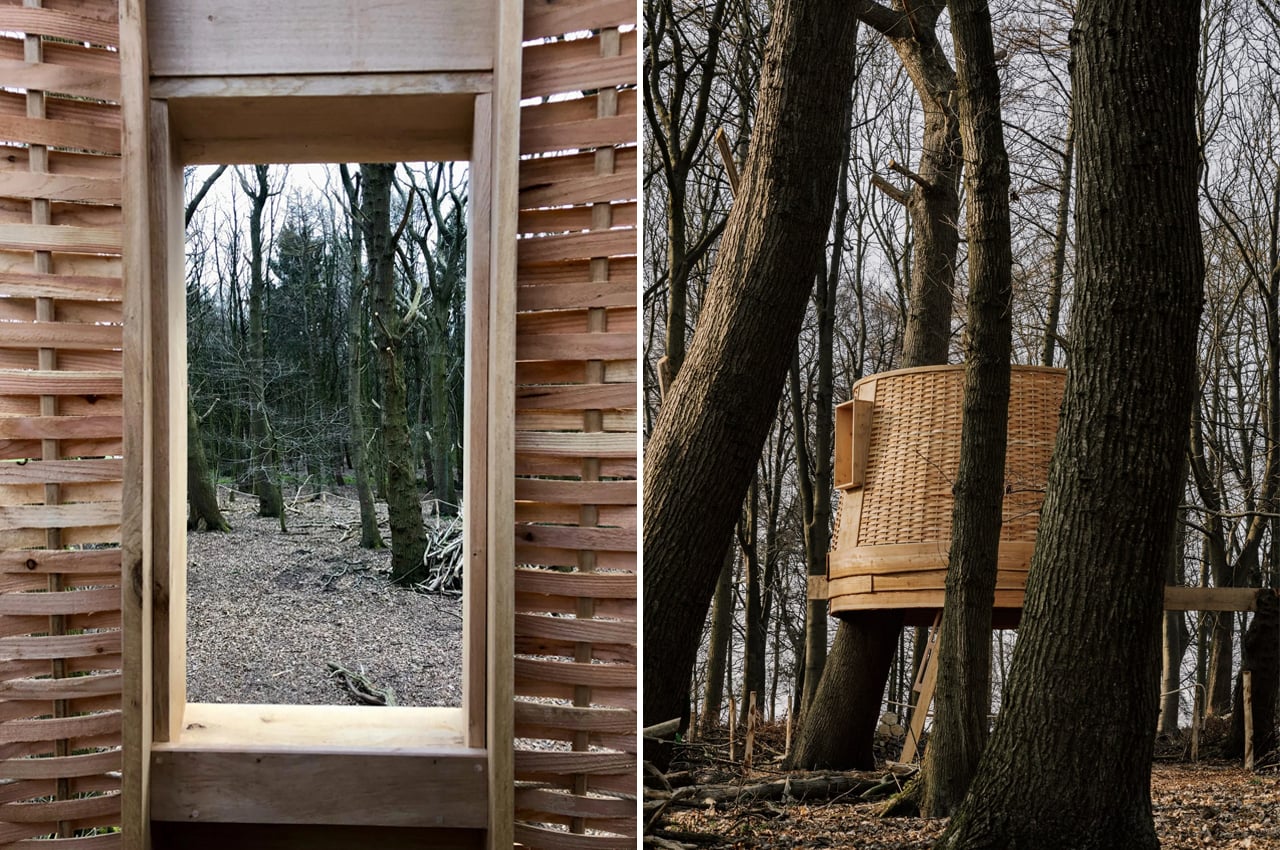
“We often think a healthy woodland is one that looks pleasing – with tall trees and a welcoming, leaf-littered woodland floor, easy to navigate with no brambles or undergrowth. But this kind of woodland is not favorable to most of our woodland wildlife,” Cox explains, “When we fell some trees in a woodland, and let light into the woodland floor, other plants, and with the insects, mammals, and birds, can thrive. It seems cutting trees can be more useful than just planting them. Only 41% of Britain’s woodlands are managed, so management should be an equal priority to planting.
